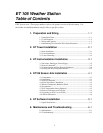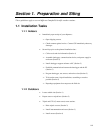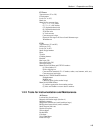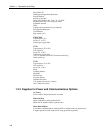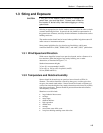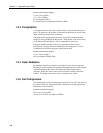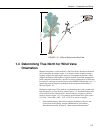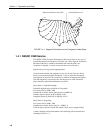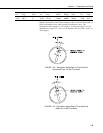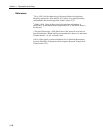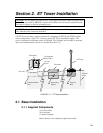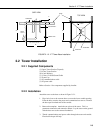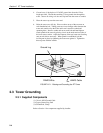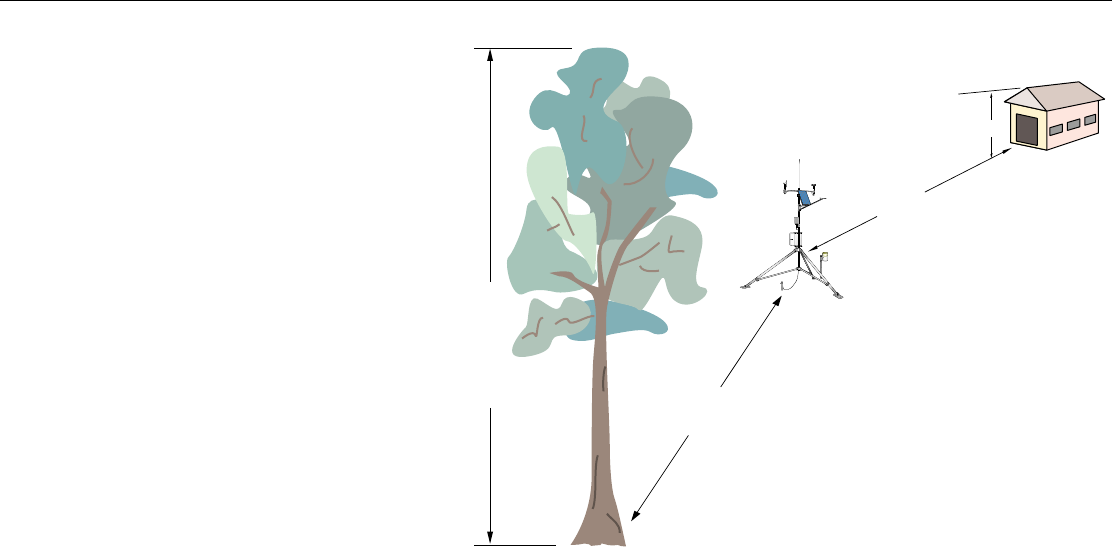
Section 1. Preparation and Siting
1-7
REGCOMENDED
FeedSENSORS
PortlandOr USA
Serial
27115
REGCOMENDED
FeedSENSORS
PortlandOr USA
Serial
27115
REGCOMENDED
FeedSENSORS
PortlandOr USA
Serial2711527115
H
10H
10T
Height of tree (T)
FIGURE 1.3-1. Effect of Structure on Wind Flow
1.4 Determining True North for Wind Vane
Orientation
Magnetic declination, or other methods to find True North, should be determined
prior to installing the weather station. True North is usually found by reading a
magnetic compass and applying the correction for magnetic declination*; where
magnetic declination is the number of degrees between True North and Magnetic
North. Magnetic declination for a specific site can be obtained from a USFA map,
local airport, or through an internet service called NSSDC CGM (Section 1.4.1). A
general map showing magnetic declination for the contiguous United States is
shown in Figure 1.4-1.
Declination angles east of True North are considered negative, and are subtracted
from 0 degrees to get True North as shown Figure 1.4-2. Declination angles west
of True North are con-sidered positive, and are added to 0 degrees to get True
North as shown in Figure 1.4-3. For example, the declination for Logan, Utah is
14.5° East. True North is 360° - 14.5°, or 345.5° as read on a compass.
* Other methods employ observations using the North Star or the sun, and
are discussed in the Quality Assurance Handbook for Air Pollution
Measurement Systems, Volume IV - Meteorological Measurements
4
.



